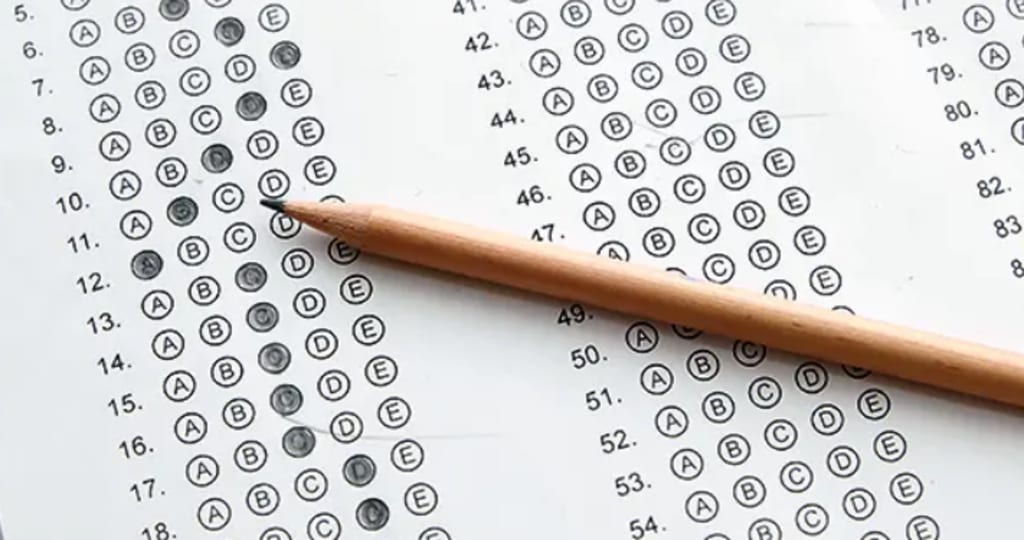Why Classroom Test Should Not Be A Benchmark For A Child’s Intelligence
Student intelligence levels should not be judged on classroom activities. Check out reasons why standardized test is not the best measure to identify a brilliant student.

Using standardized test scores to determine student educational performance is a long-standing debate in the education sector. Although this score might be helpful in some instances, they are “coins of the realm.” Most educationists don’t rate this methodology because it ignores value assessment that influences educational success.
In addition, low test results can negatively impact the students, thereby making the learners feel they are not good enough. A study suggests that standardized tests cover limited aspects of educational material while negating values, accountability, and other characteristics that make an excellent student.
Below are common disadvantages of standardized tests on students, teachers, and community;
It does not have a definite impact on learner’s education
Classroom tests began to drop in global education ranking after the US government emphasized the methodology in 2002. After a few years of making this remark by the government, a survey was conducted between 2002-2009 to determine the educational performance of US students in mathematics, and they came out 31st worldwide.
The result shows the country depreciated in learning after holding 18th position in 2002. Similarly, the US science ranking also dropped as the reading comprehension remained unchanged.
The National Research Council suggests that incentive programs associated with classroom test results have little significance on student understanding, knowledge, or comprehension.
Classroom tests are mostly predictable.
The pattern of standardized time has always been the same over the years. As a result, an intelligent student can navigate his way to get a high score despite not understanding what the teacher is saying.
The predictability indicates a human bias for actions or reactions to the learner’s endeavor. With standardized tests, it is possible to get an A result with no iota reflecting student understanding. Research shows that most test score improvement in learners’ education does not reflect any long-term positive change.
There is a general assumption that all students assimilate at a similar rate. A classroom test may allow the comparison of data performance between learners, but it did not consider student differences that are taking the test. Everyone has their level of assimilation, but a standardized test did not think if the learners had a clear understanding of the tested material.
Some regions in the US refer to this assessment as discriminatory because it assumes all the students learn at a uniform stage, which is entirely wrong. Some individuals have learning disabilities, special needs, or other challenges; they might not assimilate at the same pace as a regular student.
Classroom tests only consider raw data.
In short words, the test encompasses previous lessons but does not consider other learning possibilities. Every student has a unique way of learning. An instructor has to discover the strength of their pupil and help them to achieve their goal.
Traits like curiosity, creativity, enthusiasm, resourcefulness are not in these tests despite being essential features employers look for in their preferred candidate. For example, standardized tests can decipher student knowledge on musical theories but can determine if the learner can compose quality sound.
Teachers’ performance depends on the test results.
Most schools believe that if most of a class’ learners don’t perform well in the assessment, then the instructor is not working effectively. As a result, the teacher might be suspended or receive zero raises in some situations, thereby creating a learning problem.
With this learning approach, only students that perform poorly receive more attention. In contrast, the good ones take care of themselves, but this might not be the best approach as the poorly performing and good students might be at similar levels of understanding.
When learners don’t perform as expected, the instructor reteaches the test to upgrade the marks instead of teaching the subject materials. Another disadvantage of standardized tests is it reduces deep thinking, cognitive understanding and reduce complex assignments.
Classroom test focuses only on the curriculum.
The Center on Education Policy stated that between 2001-2007, schools reduced social studies, science, and creative subjects by more than 40% to create room to focus on reading and mathematics. In summary, it focuses on a specific aspect of the curriculum without considering the learner’s gift.
Test preparation is essential than actual learning
Because the teacher understands that the low performance of the students might backfire, instead of ensuring each learner assimilates at their pace, more time is for test preparation. Students might perform excellently in their tests but have little or no idea about actual learning when this situation occurs.
Conclusion
The truth is many schools still see the standardized test as an effective method of determining classroom performance. But, although it has advantages, most educationists don’t see it as an appropriate benchmark to determine students’ intelligence.





Comments
There are no comments for this story
Be the first to respond and start the conversation.